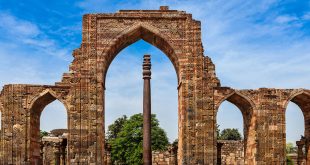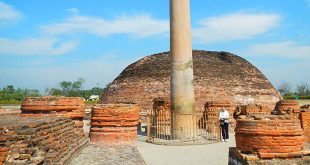Question: When was the Iron Pillar made? Answer: It was made about 1500 years ago. Question: Mention the most striking feature of the Iron Pillar. Answer: The Pillar has not rusted in all these years. Question: What do you mean by the word ‘Stupa’? Answer: The word Stupa means a …
Read More »NCERT 6th Class (CBSE) Social Science: India from the 4th Century CE to the 7th Century CE
Question: Who was Samudragupta? Answer: He was a famous ruler of the Gupta dynasty. Question: How do we know about him? Answer: We know about him from a long inscription, which is a poem in Sanskrit composed by his court poet, Harishena. Question: Where is this poem inscribed? Answer: This poem …
Read More »NCERT 8th Class (CBSE) Science: Force and Pressure
Question: Define force. Answer: Any push or pull is called force. Question: When does a body move? Answer: A body moves when force is applied. Question: What is the first requirement to put force into play? Answer: Interaction between two objects. Question: Give any example of push. Answer: Pushing a table …
Read More »NCERT 8th Class (CBSE) Science: Synthetic Fibres and Plastics
Question: Give two examples each of natural and synthetic fibres. Answer: Natural fibres: Cotton, Silk Synthetic fibres: Rayon, Nylon Question: What is a polymer? Answer: Synthetic fibres are made up of molecules called polymers. Polymers are huge molecules-usually consisting of long chains made from thousand of similar small molecules called monomers. …
Read More »NCERT 8th Class (CBSE) Science: Microorganisms
Question: What is a microorganism? Answer: Organisms that are so small that they can only be seen through a microscope, are called microorganisms or microbes. Question: Name the five groups into which microorganisms are divided. Which of these have only unicellular organisms? Answer: There are five major groups of microorganisms. …
Read More »NCERT 7th Class (CBSE) Social Science: The Human Environment: Settlement, Transport and Communication
Question: What do you understand by the term human settlement? How did settlements emerge? Answer: Human settlements refer to the locations where people build their homes. Around these settlements human communities develop. A community is a group of people living in a particular area and bound by a common culture …
Read More »NCERT 7th Class (CBSE) Social Science: The Atmosphere
Question: Explain how the atmosphere sustain life on Earth. Answer: The atmosphere is vital for life on the Earth. It helps sustain life in various ways: The atmosphere acts as a blanket by trapping terrestrial radiation and keeping the warm. It ensures that there is the correct amount of heat …
Read More »NCERT 7th Class (CBSE) Social Science: Humidity and Rainfall
Question: Distinguish between absolute humidity and relative humidity. In what units are they expressed? Answer: Absolute Humidity: This is the amount of water vapour present in a unit volume of air, and is expressed in kilograms per cubic meter. Relative Humidity: This is a measure of how dry or moist …
Read More »NCERT 7th Class (CBSE) Social Science: Wholesale Market – The Sarees of Kanchipuram
Question: What is the major advantage that a weaver enjoys when he sells directly to the customers? Answer: The advantages that weaver enjoyed is: The weaver is the master, and he decides the product. All the profit goes to him. He uses his creativity to produce the saree. There is no …
Read More »NCERT 7th Class (CBSE) Social Science: Markets Around Us
Question: What is a market? Answer: A market is a physical place where buyers and sellers meets and exchange goods, services and information. Market serves as a link between the producers and the consumers, thereby ensuring the distribution of goods and services in a society. Two types of activities takes …
Read More » Class Notes NCERT Solutions for CBSE Students
Class Notes NCERT Solutions for CBSE Students









